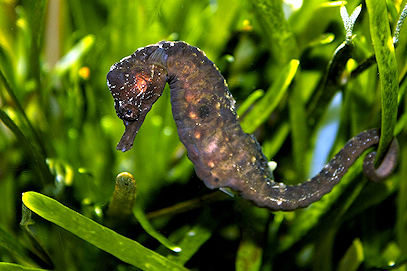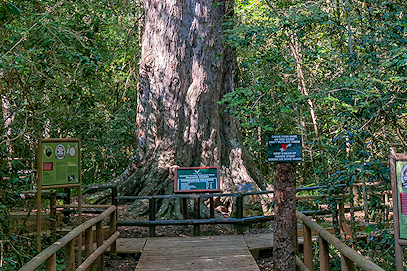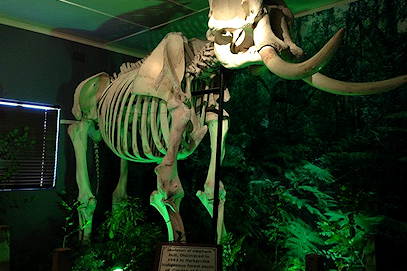The Knysna National Lakes Area is a beautiful stretch of coastline, lakes, and indigenous forest that forms part of South Africa's Garden Route - one of the most popular travel destinations in South Africa. African Sky offers numerous tours, safari, and honeymoon packages that spend a few nights in this beautiful region.
Need Advice?
The Knysna National Lakes Area lagoon is rich in invertebrate organisms and fish, which support a wide variety of water birds.

It is an area of unsurpassed beauty and splendor, offering various water sports such as boating, angling, and diving. Beautiful lush and indigenous forests, tranquil lakes, and golden beaches surround it, making it a true natural wonderland. The Knysna Marine Reserve, which falls within the Knysna National Lakes Area, has been established as a closed breeding area for invertebrates (bait organisms) to restock areas open to exploitation. The town bears the same name and is a vibrant settlement with many fine accommodations and dining establishments.
Luxurious accommodations and expert guidance make this extensive private tour experience in South Africa truly memorable. You are accompanied by a dedicated private guide.
Many of the top destinations in South Africa are explored in the company of an experienced African Sky guide. This comprehensive tour travels down the eastern side of South Africa.
Departing and returning to Cape Town, this week-long tour focuses on the wine-producing region of the Boland before venturing to South Africa's most picturesque coastal stretch.
The estuary, rivers, and streams that make their way down through the mountains to the Indian Ocean offer guests myriad water-based activities. Power-boating, diving, canoeing, taking a dip in the ocean, or hiking alongside a river en route to the beach are all on the cards.
Knysna is famous for the elephants that used to roam the mountains and hills freely before they were hunted to near extinction. A few wild elephants are still active in the Garden Route National Park, but catching a glimpse would be almost impossible. Luckily the Knysna Elephant Park can still provide visitors with a personal encounter.
Look no further if you want something more out of your African experience. Paragliding, powered paragliding, and skydiving opportunities will sweep you off your feet. No experience is required, as guests are in tandem with an experienced instructor. There is no better way to view the estuary than from this vantage point.
Relish the spoils of where the coast meets the lush Knsyna forests and flourishes into a land of lakes. The Knysna National Lakes Area is a rewarding destination, from endemic species to ancient trees and near-mythical landscapes to pure adventure.



The Knysna Lakes Area is a hop, skip, and jump from George. Travelers to the area can fly from any of the major airports to George International Airport. George is conveniently located on what locals call the South Coast, and flights from Cape Town, Durban, and Johannesburg are all under two hours.
Guests to the Knysna Lakes Area will be transported from George Airport in a private, air-conditioned vehicle past Victoria Bay, Wilderness, and the quaint town of Sedgefield before reaching Knysna. It is a short drive, but also one of the most beautiful in South Africa. The winding road cuts through forests, with the ocean to the right and the mountains to the left.
The Knysna Lakes Area is part of the green belt that stretches over the Southern Coast of South Africa, and its lushness can be attributed to the rains that fall throughout the year. The rainfall average for the summer is about 75 mm per month and 71 mm per month in the winter. Most days, however, are sunny, and the area is a great place to visit throughout the year.
The area's Mediterranean climate means that summers are not too hot and winters aren't too cold. Summer temperatures vary between 24°C and 30°C and rarely go above 30°C. The average maximum temperature during winter is around 16°C; at night, it usually drops to about 10 degrees.
The word 'Knysna' comes from the original inhabitants, the Khoikhoi. The name means 'fern' The 'k' is silent but indicates that the word started with a click. Europeans arrived at Knysna in the 1760s and established a farm called Melkhoutkraal. The first farmer, Stephanus Ter Blans, was given a loan permit to farm here in 1770. George Rex is credited with being the founder of Knysna. The British-born entrepreneur was long rumored to be a royal bastard of King George III. Rex acquired the loan rights to Melkhoutkraal in 1804 and to another farm, Welbedacht (renamed Eastford), in 1816. Rex gave 32 hectares of Eastford to the colonial government, where the Royal Navy established the township of Melville.
Knysna started developing commercially after the Thesen family arrived from Norway on a sailing ship, the Albatross. The Thesen's brought with their sailing, commercial and practical skills. They started extracting and exporting timber, established a sawmill, and even manufactured small boats. Knysna even experienced a minor gold rush after a golden nugget was found in the Karatara River in 1878. This fast-developing port became infamous for the dreaded Knysna Heads that ships had to enter the estuary through. The famous coxswain and pilot John Benn became known for guiding ships through this treacherous port. The Heads are still counted amongst the most dangerous port entries in the world.
At first glance, Knysna might not seem full of wildlife, but upon closer inspection, this will prove false. It is a treat to dive into the Knysna estuary and spot this endangered tiny seahorse amongst the marine vegetation. It is the world's first seahorse to be listed as endangered. If you don't want to get wet, look at it in the SANParks Thesen Island office. For anyone keen to dive, the Knysna estuary is an underwater wonderland filled with indigenous fauna, flora, and many shipwrecks.
Birds are plentiful. The estuary provides the perfect habitat for marine birds. Thus, seagulls, cormorants, and even the endangered southern black oystercatcher are spotted frequently. The area hosts five kingfisher species, and fish eagles are common. The nearby natural indigenous forests contain the famous Knysna Loerie, also known as the Knysna Turaco. The large indigenous forests have antelope like bushbuck, blue duiker, common duiker and steenbok. Leopards and caracals also move through these forests, though very stealthily. Recently, when trying to capture leopard footage on camera traps, the Cape Leopard Trust even got one sneaky photo of the thought-to-be extinct Knysna elephant!
A large part of the Knysna Lakes Area recently joined with the Wilderness and Tsitsikamma regions previously protected by SANParks to create the Garden Route National Park. The Knysna Lakes Area is of critical importance to the area because it encompasses the most important estuarine ecosystem in South Africa. It is also the only known natural estuarine bay in the warm-temperate region and is home to the rare Knysna Goby and Knysna Seahorse. An estuary acts as a nursery and essential feeding ground for marine animals.
Flanking the estuary, two geological features, known as the Knysna Heads, tower over the estuary like sentinels. You can visit the eastern head at any time. The western head is located on a privately owned reserve. Suppose you are looking inland from the heads, the Knysna Forest and its closed-canopy stretch in both directions. The indigenous forest is accompanied by fynbos vegetation which has over 8 000 plant species and falls within the Cape floral kingdom. Although the entire forest is protected, the Outeniqua yellowwood, real yellowwood, milkwood, and stinkwood count amongst those who have received the highest level of protection.
Knysna is an all-in-one area for wildlife, landscapes, and adventure. Some of the best hiking trails in the country can be found in the area and encompass a series of settings, including the famed Knysna Forest and coastal regions. The lagoon and Knysna Heads are ideal spots for landscape photographers or those searching for a breathtaking view. You can play golf at the impressive Simola Golf and Country Estate, and boating, snorkeling, and various other water activities are available for those more comfortable on or in the water. Paragliding is also quite popular in the area.
If you are traveling with the kids, sand boarding, and a trip to Monkeyland or the Knysna Elephant Park are a few activities to keep in mind (there are too many to list). If you prefer a more relaxed experience, try a sunset cruise on the lagoon, a day at the beach, or a picnic in the woods. There are various weekly and monthly local markets and events where local craft-makers gather. If you love wine or beer, visiting the Packwood Wine Estate & Vineyard or Mitchell's Brewery should be on your to-do list.